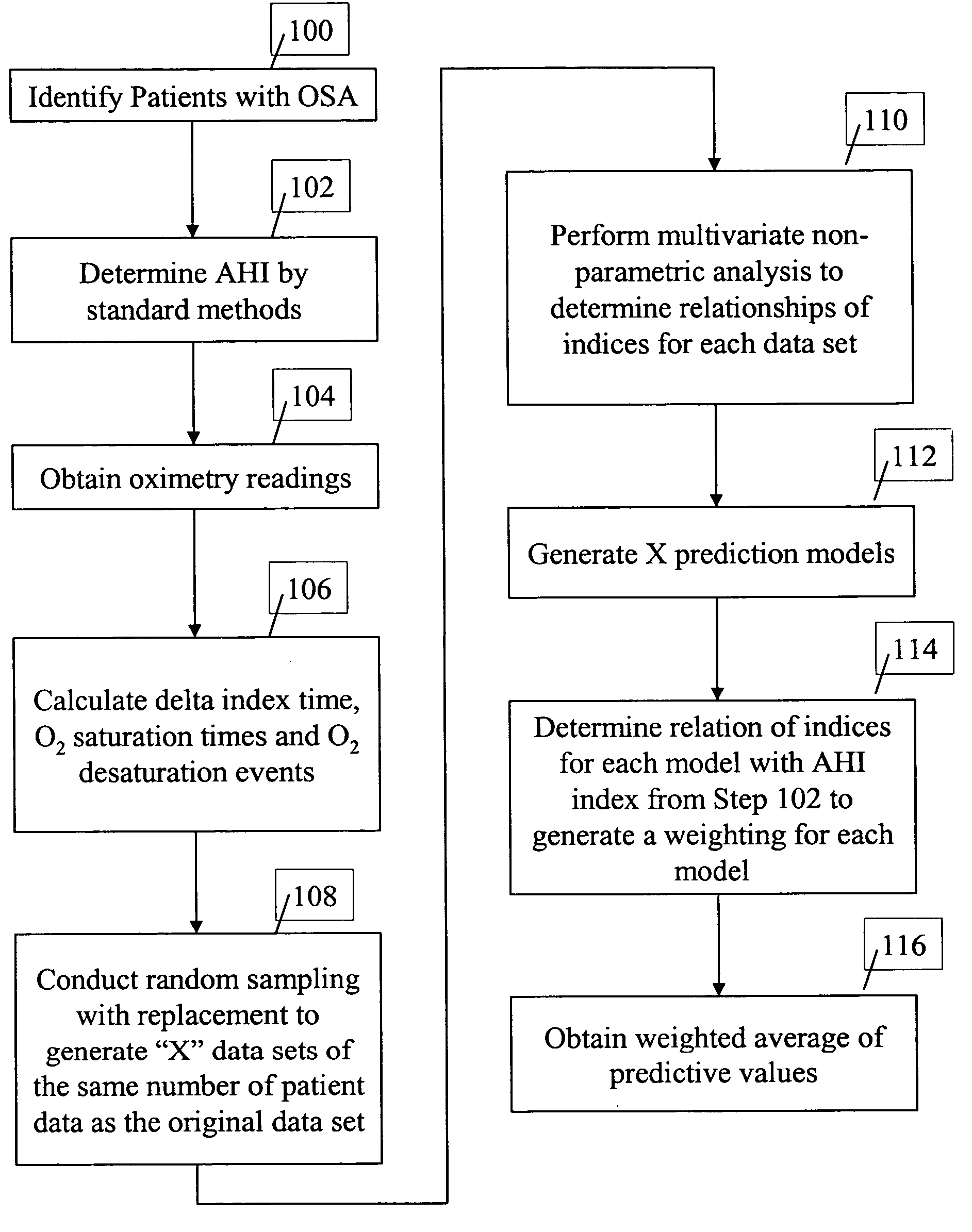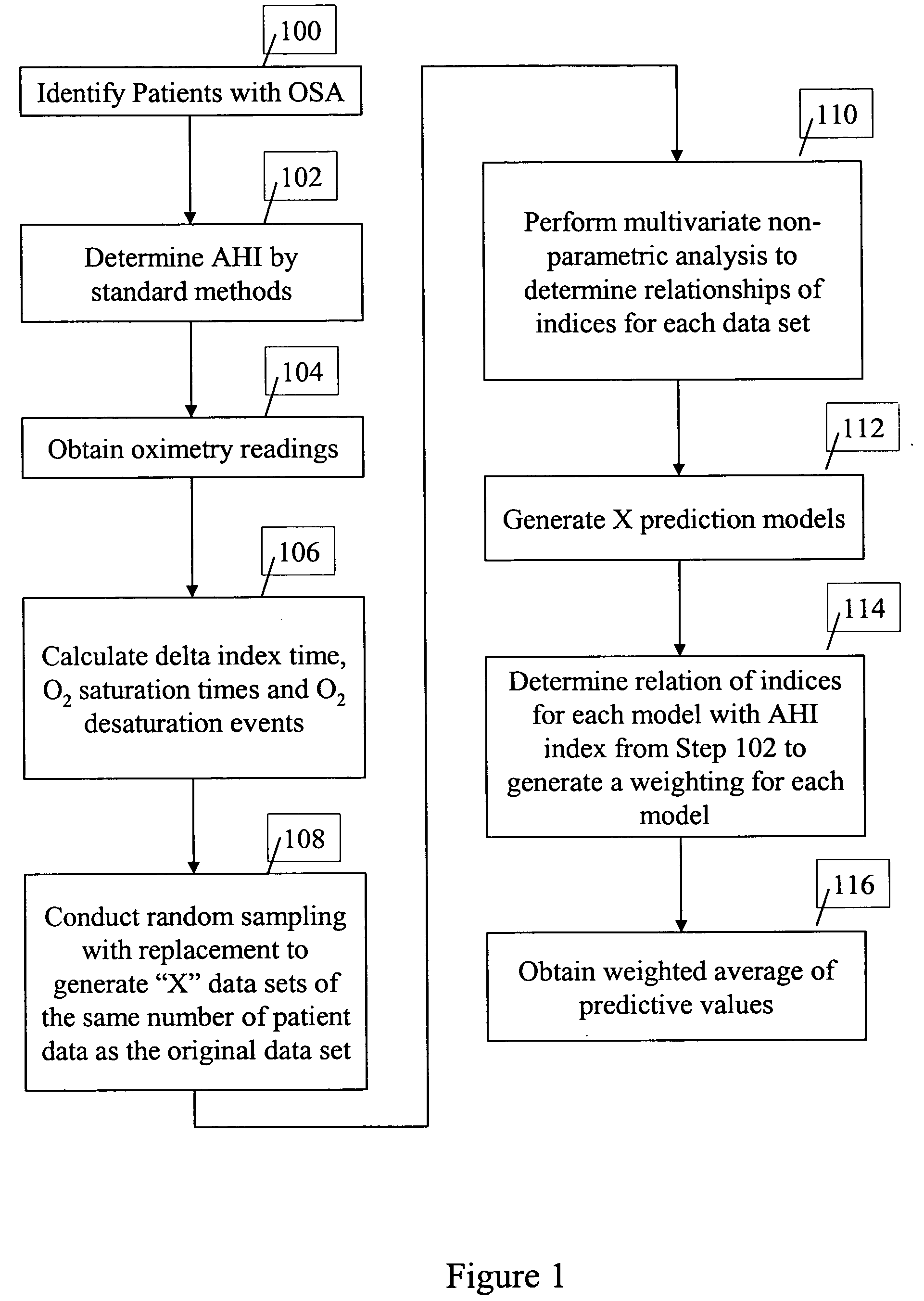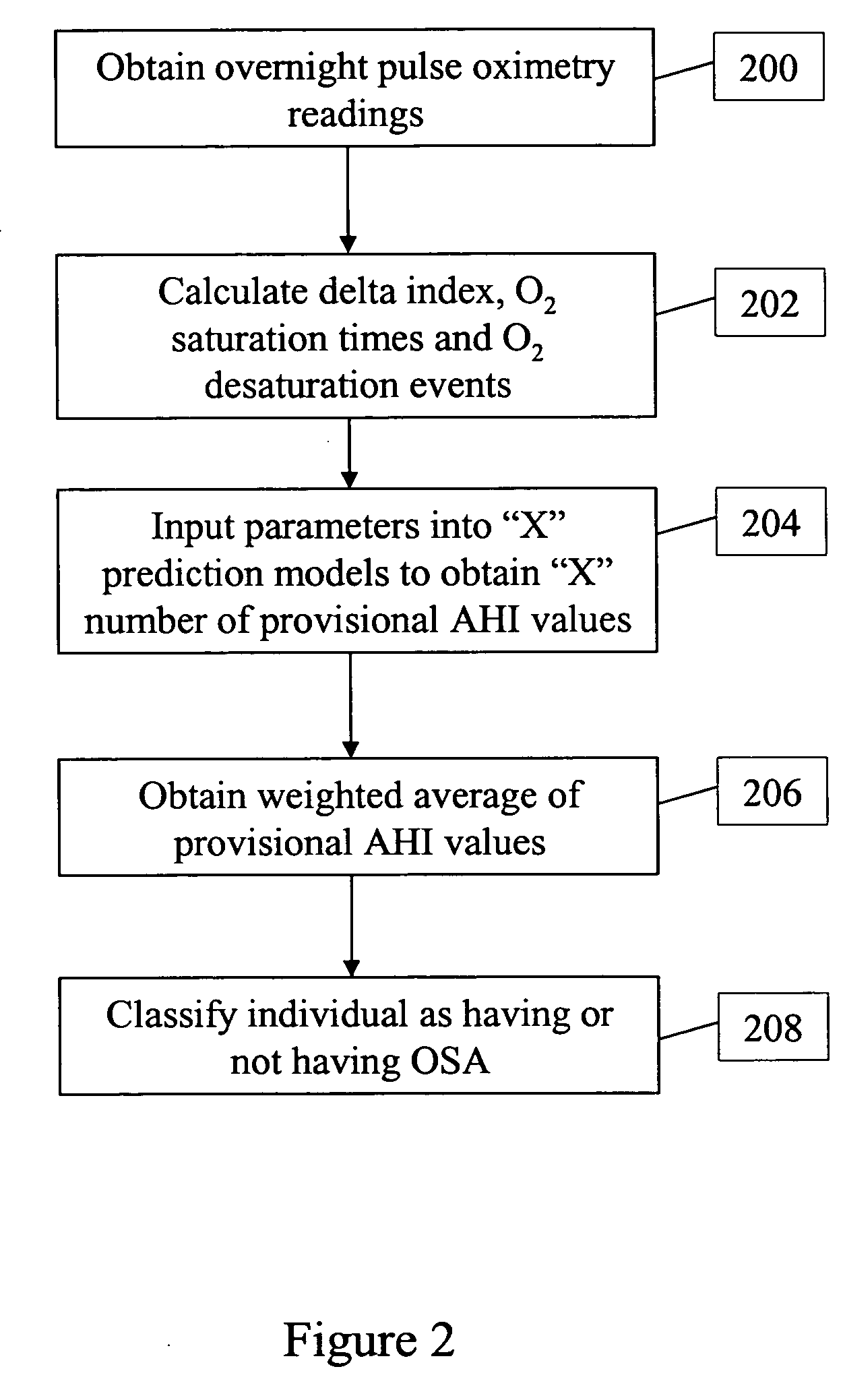Method for predicting apnea-hypopnea index from overnight pulse oximetry readings
a technology of apnea and hyperpnea index, applied in the field of sleep disordered breathing, can solve the problems of inability to compare the relative utility of osa and psg, cost and time-consuming psg, and inability to predict the apnea-hypopnea index
- Summary
- Abstract
- Description
- Claims
- Application Information
AI Technical Summary
Problems solved by technology
Method used
Image
Examples
example 1
[0032] Five hundred and sixteen patients suspected of having OSA were enrolled into this study. Patients were recruited from two independent sleep clinics in Buffalo, N.Y.: the Associated Sleep Center (ASC) and the Buffalo Veterans Affairs Medical Center (VAMC) Sleep Center. The eligibility criteria were all patients who underwent an overnight PSG for suspected sleep apnea. The exclusion criteria were age <18 years, the sleep study was done while on oxygen supplementation, or CPAP titration was performed on the same night as the diagnostic study (split-night study). Of the 516 patients, 224 were assigned to the Derivation Group, 101 to Validation Group I and 191 to Validation Group II. The patient characteristics of the Derivation and two Validation Groups are shown in Table 1.
TABLE 1Summary of patient characteristics.DerivationValidationValidationGroupGroup IGroup IIPatient characteristicsn = 224n = 101n = 191Age (years)48.9 ± 12.351.8 ± 11.556.0 ± 12.8§§BMI (kg / m2)32.3 ± 7.432.7...
PUM
 Login to View More
Login to View More Abstract
Description
Claims
Application Information
 Login to View More
Login to View More - R&D
- Intellectual Property
- Life Sciences
- Materials
- Tech Scout
- Unparalleled Data Quality
- Higher Quality Content
- 60% Fewer Hallucinations
Browse by: Latest US Patents, China's latest patents, Technical Efficacy Thesaurus, Application Domain, Technology Topic, Popular Technical Reports.
© 2025 PatSnap. All rights reserved.Legal|Privacy policy|Modern Slavery Act Transparency Statement|Sitemap|About US| Contact US: help@patsnap.com



